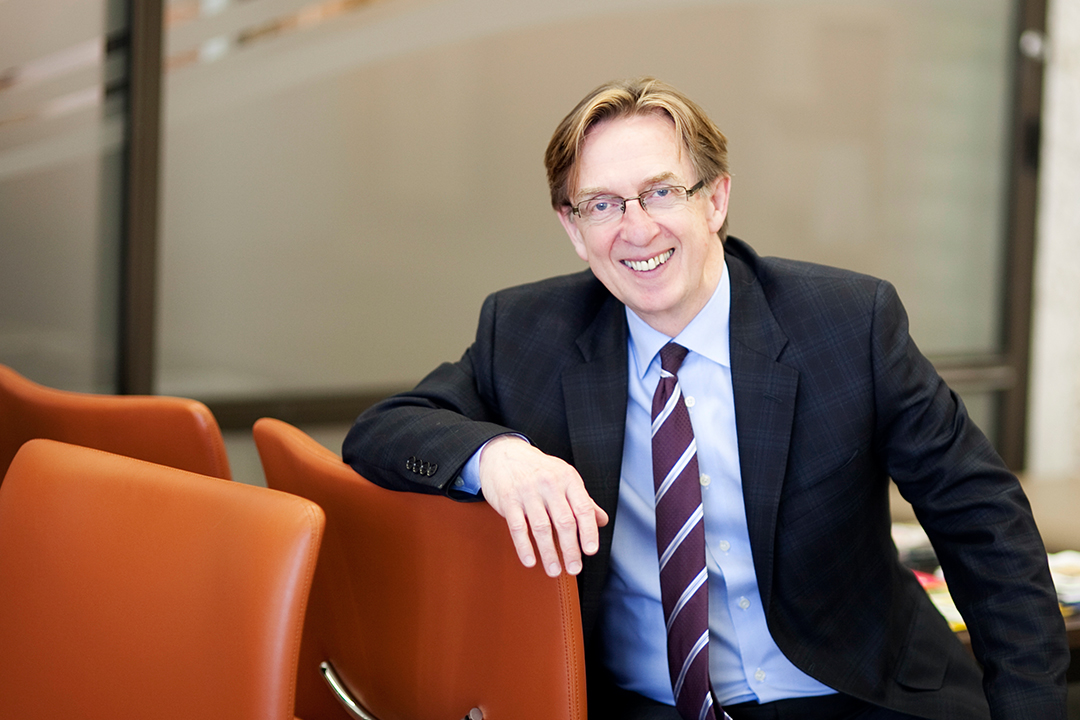
A provost’s priorities
When Michael Atkinson stepped into the role of provost and vice-president academic for a second time on Oct. 1, he had a clear sense of what projects he wanted to start and what goals he wanted to accomplish.
By Kris Foster“It’s two roles, really,” said Atkinson who was the university’s first provost and vice-president academic from 1997 to 2007. “The vice-president academic is responsible for the colleges and the student experience at the university. The provost is a different role—the person in this role needs to develop an academic agenda and connect that to the financial decisions of the university.”
To that end, Atkinson highlighted a few key areas that will be important to him during his tenure as interim provost: understand the current fiscal situation of the university, launch the next integrated plan, participate in a discussion of the quality of the student experience, and initiate a conversation on the standards for tenure and promotion for faculty.
“We are entering a period in which we have to be more selective and cautious financially speaking,” said Atkinson who was previously a professor in the Johnson-Shoyama Graduate School of Public Policy. “We have to ensure our budgetary situation is sustainable and I expect to spend time understanding what our commitments are, and where necessary either slowing them down or trimming them back in order to meet our capacity.”
Atkinson said an immediate priority is to respond creatively to the current provincial financial situation. “We understand the situation and we are going to approach the province accordingly. We have to think about different scenarios here, but we must also attend to very pressing needs that won’t wait until the economy recovers.”
Atkinson expects the short-term to be financially turbulent, but as a self-described fiscal conservative who has been through this before, he said he is well prepared.
“Every provost is a fiscal conservative and brings a skeptical eye to suggestions, ideas and requests. Every provost asks whether this is genuinely needed or if things can be accomplished in other ways with the resources we have,” he said. “Making sure we are financially and academically sustainable is part of what the provost does. We need to be sure the investments we are making have real returns for the community and support learning and the student experience.”
Planning and consultations for the next integrated plan are just getting underway. While parameters, framework and timelines for the next integrated plan will be led by Atkinson’s office, he wants the “deans, directors and units to be creative in determining where they want to be in four years’ time.”
Atkinson is clear that while he is responsible for “getting the timelines and process underway so we can have something we are very proud of,” he is unlikely to be in the provost’s office when the next integrated plan seeks approval from the senior governing bodies in 2018.
Atkinson is, of course, also responsible for the recruitment of deans and other senior positions. “I take that role very seriously,” he said. “There are quite a few positions that are open and I will assume responsibility for many of those dean searches. That will take a great deal of my time.”
Another search Atkinson is keenly interested in is that of the provost and vice-president academic, a role he expects to be filled in short order.
“We are in an active search and have a head start and that’s a good thing because we are competing with a few other universities. I would expect that if we can find someone to fit our needs, and that person wants to join us, then we should have a permanent provost by July 1, 2017.”
An interesting contradiction for Atkinson is the short-term nature of his appointment and the long-term nature of his duties.
“When you come into a job like this you can either keep the seat warm and move the papers around, or you could overdo it and act like you will be here for a long time and inherit the consequences of all of the decisions. I’m aiming for the middle but will probably err more on the active side, because I know the position and that’s kind of who I am.”
An example of that, Atkinson explained, is opening a conversation on the standards of promotion and tenure, which were last revisited when he introduced them during his first stint as provost. He said he wants to examine them and make “sure the standards fit with our ambitions. The permanent provost can have the benefit of those conversations. I want to leave the position in a state where the new person can walk in and feel like they can accomplish something on day one.”
